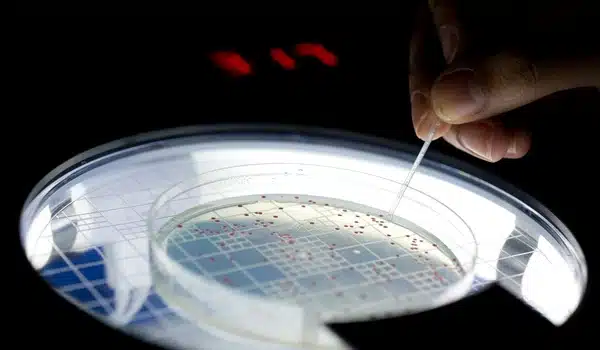Researchers from Carnegie Mellon University’s Department of Mechanical Engineering worked with paleontologists from Spain and Poland to create a soft robotic replica of pleurocystitid, a marine organism that existed nearly 450 million years ago and is thought to be one of the first echinoderms capable of movement via a muscular stem.
The research, which was published in The Proceedings of the National Academy of Science (PNAS), aims to broaden modern perspectives of animal design and movement by introducing a new field of study called Paleobionics, which uses Softbotics, robotics with flexible electronics and soft materials, to understand the biomechanical factors that drove evolution using extinct organisms.
“Softbotics is another approach to informing science that uses soft materials to build flexible robot limbs and appendages.” Many fundamental principles of biology and nature can only be fully explained by looking back at the evolutionary timeline of how animals evolved. “We’re building robot analogues to study how locomotion has changed,” said Carmel Majidi, lead author and Professor of Mechanical Engineering at Carnegie Mellon University.
Bringing new life to something that existed nearly 500 million years ago is exciting in and of itself, but what really excites us about this breakthrough is how much we will be able to learn from it. We aren’t just looking at fossils in the ground, we are trying to better understand life through working with amazing paleontologists.
Carmel Majidi
With humans representing only 0.007% of the planet’s history, the modern-day animal kingdom that influences evolutionary understanding and inspires today’s mechanical systems is only a fraction of all creatures that have existed throughout history.
The team demonstrated that pleurocystitids were likely able to move over the sea floor by means of a muscular stem that pushed the animal forward, using fossil evidence to guide their design and a combination of 3D printed elements and polymers to mimic the flexible columnar structure of the moving appendage. Despite the lack of a modern-day analogue (echinoderms have since evolved to include modern-day starfish and sea urchins), paleontologists have been intrigued by pleurocystitids due to their pivotal role in echinoderm evolution.

The researchers determined that wide sweeping movements were most likely the most effective, and that lengthening the stem significantly increased the animals’ speed without requiring them to exert more energy.
“Researchers in the bio-inspired robotics community need to pick and choose important features worth adopting from organisms,” said Richard Desatnik, PhD candidate and co-first author.
“To get our robots moving, we need to decide on good locomotion strategies.” For example, does a starfish robot really need 5 limbs for locomotion, or can we come up with a better strategy?” added Zach Patterson, a CMU alumnus and co-first author.
Now that the team has shown that they can use Softbotics to engineer extinct organisms, they hope to investigate other animals, such as the first organism to travel from sea to land, which cannot be studied in the same way using traditional robot hardware.
“Bringing new life to something that existed nearly 500 million years ago is exciting in and of itself, but what really excites us about this breakthrough is how much we will be able to learn from it,” said co-author and Carnegie Mellon University Professor of Mechanical Engineering Phil LeDuc. “We aren’t just looking at fossils in the ground, we are trying to better understand life through working with amazing paleontologists.”















